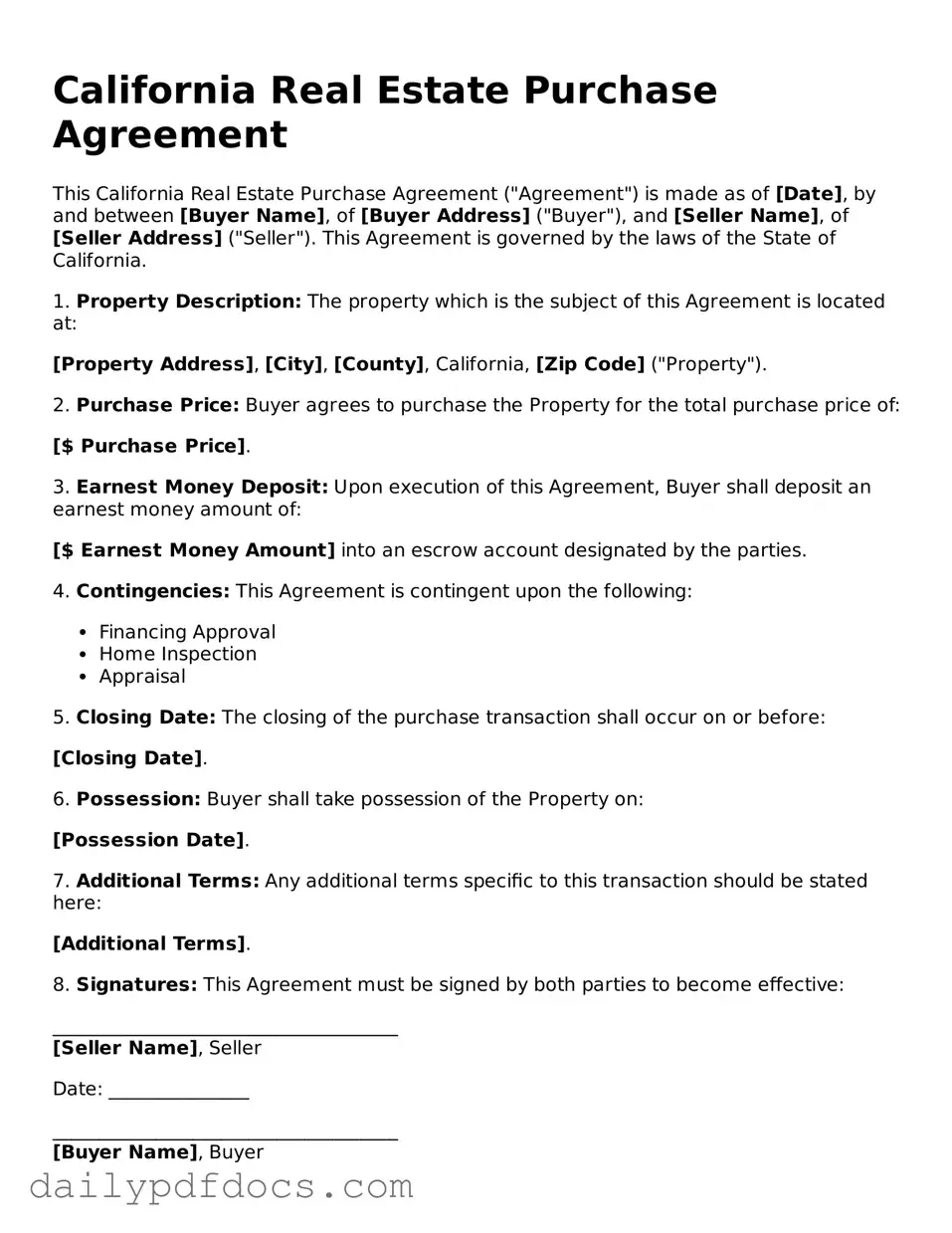California Real Estate Purchase Agreement
This California Real Estate Purchase Agreement ("Agreement") is made as of [Date], by and between [Buyer Name], of [Buyer Address] ("Buyer"), and [Seller Name], of [Seller Address] ("Seller"). This Agreement is governed by the laws of the State of California.
1. Property Description: The property which is the subject of this Agreement is located at:
[Property Address], [City], [County], California, [Zip Code] ("Property").
2. Purchase Price: Buyer agrees to purchase the Property for the total purchase price of:
[$ Purchase Price].
3. Earnest Money Deposit: Upon execution of this Agreement, Buyer shall deposit an earnest money amount of:
[$ Earnest Money Amount] into an escrow account designated by the parties.
4. Contingencies: This Agreement is contingent upon the following:
- Financing Approval
- Home Inspection
- Appraisal
5. Closing Date: The closing of the purchase transaction shall occur on or before:
[Closing Date].
6. Possession: Buyer shall take possession of the Property on:
[Possession Date].
7. Additional Terms: Any additional terms specific to this transaction should be stated here:
[Additional Terms].
8. Signatures: This Agreement must be signed by both parties to become effective:
_____________________________________
[Seller Name], Seller
Date: _______________
_____________________________________
[Buyer Name], Buyer
Date: _______________
By signing above, both parties agree to the terms and conditions set forth in this Agreement, which represents the entire understanding between them.
